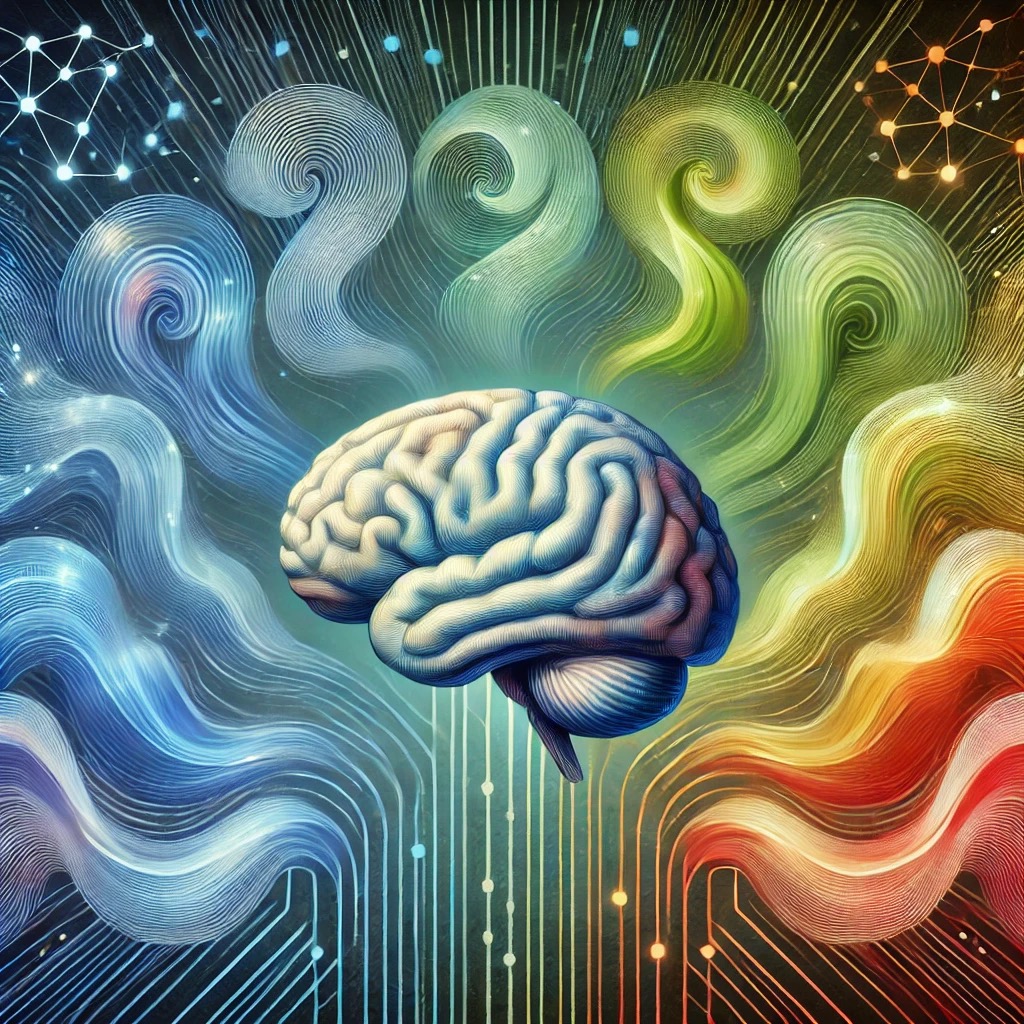The World of Brainwaves
Our human brain is an electro-chemical marvel whose activities manifest in the form of brainwaves. These waves are relevant not only for our well-being and cognitive abilities, but also for our spiritual and emotional experiences. The different brainwave frequencies reflect different mental states – from deep meditation to the highest alertness. In this article, we will shed light on the diversity of these waves and their effects on body and mind.
Our brain operates in different frequency ranges, known as brainwaves. These waves are electromagnetic oscillations that influence consciousness, emotions, and even the perception of time.
The six main types of brainwaves:
1. High Gamma and Lambda Waves (70 – 200 Hz)
High Gamma and Lambda waves, which reach a frequency of up to 200 Hz, are rarer and less researched. It is believed that they occur during the processing of highly complex information and during spiritual experiences. Lambda waves may be active in moments of deep transcendental meditation and help to expand consciousness.
2. Gamma Waves (30-100 Hz) – Highest Consciousness Activity
Gamma waves are the fastest brainwaves and occur when the brain is working at peak performance. They are associated with higher cognition, intuition, spiritual experiences, and increased perception, and provide a sense of unity, expanded awareness, and deep inspiration.
3. Beta Waves (13-30 Hz) – Waking Consciousness & Focus
Beta waves dominate when we are in a normal waking state, working, talking, or thinking logically. They are essential for attention, problem solving, and decision making.
They can be divided into three subcategories:
- Beta1 (12 – 16 Hz): Low-Beta, also known as Sensorimotor Rhythm, stands for relaxed attention and improves concentration.
- Beta2 (16 – 20 Hz): Mid-Beta promotes increased mental alertness and is ideal for demanding cognitive tasks.
- Beta3 (20 – 30 Hz): High-Beta is characteristic of intense concentration, but carries the risk of anxiety and stress if overstimulation occurs.
4. Alpha Waves (8-13 Hz) – Relaxation & Creativity
Alpha waves mark a state of relaxed wakefulness and are ideal for creative thinking and learning. The alpha state forms the bridge between the subconscious and the conscious and is crucial for mental clarity and stress reduction. They occur when we are in a state of deep but conscious relaxation – for example, shortly before falling asleep or after waking up. The presence of alpha waves not only supports general well-being, but also promotes memory functions and the ability to solve problems efficiently.
5. Theta Waves (4-8 Hz) – Trance & Subconscious
Theta waves are particularly fascinating because they are associated with deep trance states, emotional processing, and the world of the subconscious. They are characteristic of light sleep, REM phases, meditative states, and occur during deep hypnosis.
They are associated with deep states of relaxation, increased creativity, and intuitive thinking. Theta waves also promote emotional processing and memory performance. Studies show that people in this state have an increased ability to solve problems and have creative breakthroughs. Intuitive insights, deep immersion in inner images, and emotional transformation are made possible.
6. Delta Waves (0.5-4 Hz) – Deep Relaxation & Healing
Delta waves are the slowest brainwaves and dominate in dreamless phases of deep sleep.
They play an essential role in physical recovery and regeneration, strengthen the immune system and support the healing process of the body. In meditative states, they promote a deep, trance-like consciousness, initiate deepest relaxation and letting go, as well as strong physical and emotional healing processes and contribute to rejuvenation.
7. Epsilon Waves (0.1 – 0.5 Hz)
Epsilon waves are rare, barely perceptible frequencies that are mainly associated with states of deepest meditation and healing sleep. Since they have only recently been researched, their full potential is not yet fully understood. However, it is believed that they can expand consciousness and deepen spiritual experiences.
Brainwaves and the Music in Innerdance
The specially curated music plays a key role in the innerdance process, as it specifically influences the brainwaves:
Rhythmic elements: Activating rhythms stimulate Beta and Gamma waves to sharpen awareness and perception.
Ambient and soundscapes: Gentle sounds, nature sounds and soft chants lead into an Alpha and Theta state, allowing participants to enter deeper levels of experience.
Deep, gentle frequencies: Support the transition into Delta states, where healing and emotional processing take place.
Neurochemistry & Brainwaves in Innerdance
During the innerdance process, neurotransmitters such as dopamine, serotonin, GABA and acetylcholine are modulated, which are closely linked to the various brainwaves:
Dopamine & Beta/Gamma Waves: Promotes motivation, wakefulness and expansion of consciousness.
Serotonin & Alpha/Theta Waves: Creates a feeling of inner peace and openness.
GABA & Delta Waves: Supports deep relaxation, healing and neuronal regeneration.
Conclusion: Brainwaves as a Bridge between Consciousness and Transformation
The diversity of brainwaves reflects the immense complexity and flexibility of our brain. These waves, which are divided into different frequency ranges – such as alpha, beta, theta, delta, gamma and rarely explored lambda waves – reveal how our brain can put itself into different states to meet different mental and physical requirements. A deeper understanding of these frequencies enables us to specifically apply techniques to improve our mental well-being.
Innerdance is a modality that allows a journey through different states of consciousness, in which the brain can reorganize itself. Through the targeted change between the brainwaves, deeply rooted emotional patterns can be transformed, neuronal self-regulation promoted and new insights gained.

